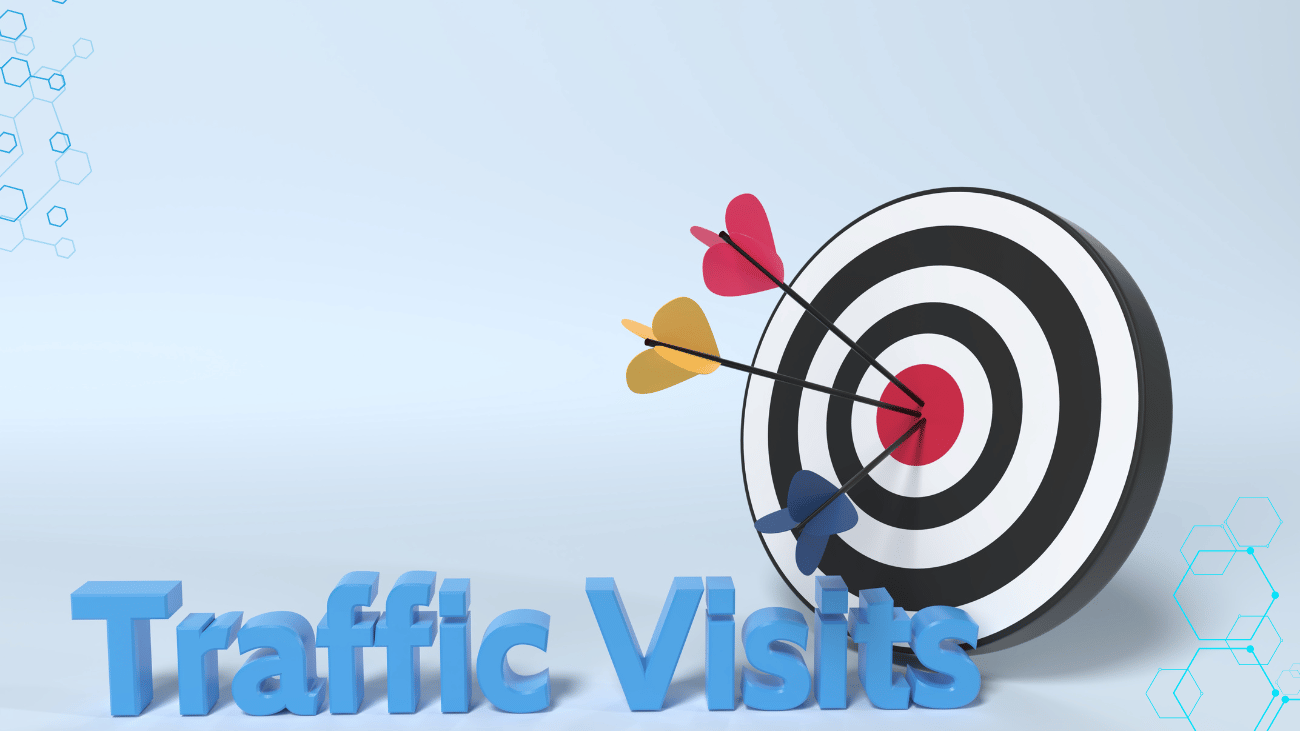Introduction to Social Media Content Planning
In today’s digital landscape, a social media content planner book serves as an essential tool for individuals and businesses aiming to enhance their social media presence. This specialized planner offers a structured approach to managing and organizing content across various platforms, ultimately leading to more effective marketing strategies. With numerous social media channels available, the importance of having a clear and concise content plan cannot be overstated. By utilizing a planner, users can streamline their content creation processes, ensuring that each piece of content aligns with their overall marketing goals.
One of the primary advantages of a social media content planner book is that it allows users to set specific objectives for their posts. Goals may include increasing engagement, boosting brand awareness, or driving website traffic. By defining these targets, marketers can tailor their content to meet these aims, leading to more meaningful interactions with their audience. Furthermore, a planner enables the tracking of performance metrics, providing valuable insights into what types of content resonate most with followers. This data-driven approach facilitates informed decisions that can refine future content strategies.
Essential Features of a Social Media Content Planner Book
A good social media content planner book is a vital tool for marketers and content creators alike. It serves as a roadmap, guiding them through their content strategies while simplifying the often complex world of social media management. Here are some essential features that an effective planner should encompass.
Firstly, incorporating monthly calendars allows users to visualize their entire content schedule at a glance. This feature aids in strategic planning, ensuring that content is published consistently and aligned with key dates and events relevant to the target audience. A visual layout can significantly enhance productivity, helping marketers to allocate time effectively for content creation and review.
In addition to calendars, sections dedicated to daily content ideas are crucial. These segments encourage creativity by prompting users to brainstorm and document potential post ideas for various platforms, tailored to their audience’s preferences. Utilizing these sections can lead to the generation of innovative content, which is essential in maintaining audience engagement on social media channels.
Analytics tracking is another important element that should not be overlooked. A good social media content planner book should provide dedicated spaces for evaluating performance metrics, which helps users understand what type of content resonates with their audience. Monitoring success through metrics such as engagement, reach, and conversion rates allows for informed adjustments to the content strategy.
Lastly, providing ample space for notes and brainstorming is vital. This section incentivizes creativity and reflection, giving users the opportunity to jot down thoughts, analyze feedback, or plan future campaigns. When looking for a planner, one might also consider different formats available in the market. Comparing these various styles, such as digital versus physical planners, can help individuals choose the one that best suits their working style.
Benefits of Using a Social Media Content Planner Book
A social media content planner book serves as an essential tool for both individual content creators and collaborative teams. Its primary advantage lies in the enhanced organization it provides, allowing users to structure their content strategy effectively. By having a centralized space for planning, it minimizes the risk of last-minute content generation, ensuring that posts are timely and relevant to ongoing campaigns. This organized approach facilitates better tracking of various social media platforms’ performance metrics and helps in aligning efforts with established goals.
Creativity in content generation is significantly boosted through the use of a content planner book. By setting aside dedicated time to brainstorm and sketch out ideas in advance, creators can explore diverse topics and formats. This proactive method reduces pressure, paving the way for innovative concepts that resonate with target audiences. As identified by social media expert Jane Doe, “A well-structured planner not only streamlines operations but also ignites creativity.” Using a planner can help users refine their creative processes, allowing for curated content that reflects brand identity and audience interests.
Furthermore, a social media content planner book enhances collaboration among teams. In environments where multiple individuals contribute to social media efforts, a shared planner fosters clarity and cohesion. It allows team members to seamlessly coordinate their contributions, ensuring that everyone is aligned on messaging and scheduling. This collaborative environment is crucial for maintaining effective branding consistency, as repeated themes and tone across different posts solidify brand recognition. Ultimately, the benefits of integrating a social media content planner book into one’s strategy are manifold, contributing to more efficient management, heightened creativity, and strengthened teamwork.
Creating a Personalized Social Media Content Planner Book
Designing your own social media content planner book involves a series of thoughtful decisions that can greatly enhance user experience and functionality. The first aspect to consider is the layout. An organized layout is fundamental for efficient planning, and it typically includes sections for monthly overviews, daily content schedules, and space for brainstorming ideas. For instance, dividing the pages into grids can help with spacing tasks visually, ensuring that content creators can plan their posts without confusion.
The color scheme is another critical design factor. Choose colors that resonate with your brand identity and evoke the desired emotional response from your audience. Harmonizing colors will not only make your planner visually appealing but also aid in categorizing different types of content—such as promotional posts, engagement content, or informative articles. For instance, using warmer colors for engagement posts may garner a different response compared to cooler tones used for informational content.
When selecting the type of paper, consider the medium you will be using—whether it’s markers, pens, or pencils. Choosing thicker paper can prevent bleed-through, whereas textured paper can add an extra layer of tactile pleasure to the planning experience. Ideally, you should also incorporate some blank pages for free-form notes or sketches that may arise during your brainstorming process.
To make the creation process even smoother, various external resources provide templates and digital tools that can aid you in developing your content planner. Websites like Canva offer customizable templates that can jumpstart your design process. Additionally, utilizing digital platforms like Notion or Trello can allow for a more dynamic and interactive approach to content planning, adapting to the ever-changing social media landscape.
Popular Templates and Tools for Social Media Content Planning
Effective social media content planning can be streamlined with the right templates and digital tools. A variety of options exist, each designed to cater to different planning styles and preferences. Below are some popular recommendations, complete with a brief overview of their advantages and disadvantages.
1. Hootsuite
Hootsuite is an all-in-one social media management tool that allows for scheduling, tracking, and analytics across multiple platforms. Its user-friendly interface and robust scheduling capabilities make it a favorite among marketing professionals. However, the pricing can be steep for small businesses, and beginners may find the features overwhelming.
Explore Hootsuite
2. Trello
Trello offers a visual approach to content planning with its card-based layout. Users can create boards for different campaigns, assign deadlines, and collaborate with team members seamlessly. While Trello is highly customizable, it’s essential for users to invest time in setting it up, which can be a drawback for those seeking a quick solution.
Discover Trello
3. CoSchedule
CoSchedule is a comprehensive marketing calendar that merges content planning with social media scheduling. It provides various features such as headline analysis and analytics tracking. However, its costs can escalate, particularly for larger teams, which may discourage some potential users.
Visit CoSchedule
4. Buffer
Buffer is admired for its simplicity and effectiveness in managing posts across social media platforms. Users can schedule content in advance, monitor engagement, and analyze results with ease. One limitation is that Buffer may lack advanced features that a user might expect from a more comprehensive tool.
Check out Buffer
Ultimately, the right tool or template depends on your specific needs, team size, and content strategy objectives. All options discussed serve to enhance the efficiency and effectiveness of your social media content planning process.
Tips and Best Practices for Effective Content Planning
Utilizing a social media content planner book effectively requires a strategic approach that takes into account various factors influencing engagement and reach. One of the fundamental best practices is to establish a consistent posting frequency. Regular updates help maintain audience interest and keep the brand top-of-mind. It is recommended to define a schedule that aligns with the audience’s online behavior, allowing for optimal engagement during peak times.
Content variety is essential in captivating and retaining followers. Relying solely on promotional content can lead to audience fatigue. Therefore, incorporating diverse formats such as infographics, videos, polls, and user-generated content can enhance interaction levels. This variety not only entertains but also educates the audience, fostering deeper connections with the brand.
Moreover, utilizing overarching themes or campaigns can create a cohesive narrative that resonates with your audience. Whether launching a seasonal campaign or aligning posts with specific events, this strategy can boost engagement by tapping into broader discussions across social platforms. Consistency with these themes ensures that followers can easily connect with the content, enhancing its overall impact.
Equally important is the practice of analyzing post performance. Regularly reviewing metrics such as engagement rates, reach, and audience feedback can provide invaluable insights into what works and what doesn’t. By employing tools available in the content planner book to track this data, you can make informed adjustments to your strategy to improve future posts.
A wise reminder in the realm of social media management is: “Consistency breeds trust.” Commit to a steady posting rhythm and maintain content diversity to foster trust and loyalty from your audience, ultimately bolstering your brand’s presence online.
Case Studies of Successful Content Planner Usage
In today’s digital landscape, social media plays a pivotal role in shaping public perception and driving engagement. Many businesses and influencers harness the power of a social media content planner book to streamline their strategies and enhance their online presence. This section explores a few notable case studies that illustrate the tangible benefits of employing a content planner.
One such example is Fitness Coach Sarah, who operates a thriving online coaching business. Before adopting a content planner, Sarah struggled with inconsistency in her social media posts, often posting content at irregular intervals. Recognizing the need for organization, she began using a social media content planner book to map out her posts weeks in advance. By documenting her ideas and scheduling content, she was able to maintain a consistent posting schedule. As a result, her engagement rates improved significantly, leading to a 30% increase in followers within three months.
Another compelling case is that of the fashion brand TrendSetters, which specializes in sustainable clothing. Faced with the challenge of standing out in a saturated market, they leveraged a social media content planner book to create a cohesive branding strategy. By outlining their monthly themes and aligning their visuals across platforms, TrendSetters established a recognizable identity. The planner enabled them to monitor trends and adapt swiftly. Over a six-month period, they reported a doubling of their online sales, crediting the organized approach facilitated by their content planner.
Lastly, influencer Jamie, known for her travel content, implemented a planner to tackle the chaos of her busy schedule. By structuring her posts around trips and events, she could better engage her audience and share authentic experiences. This strategic approach led to an impressive uptick in collaboration requests from brands and a 25% boost in her audience interaction. These case studies underscore the importance of utilizing a social media content planner book to overcome challenges and achieve substantial results.
Common Mistakes to Avoid When Planning Content
Utilizing a social media content planner book can greatly enhance both the quality and effectiveness of online engagement. However, there are several common mistakes that individuals and teams often encounter during this process, which can significantly hinder their social media strategy.
One prevalent error is over-promoting products or services. While it is important to share promotional content, an excessive focus on self-promotion can lead to follower disengagement. This approach can diminish the perceived value of the social media presence and cause followers to lose interest. Instead, a balanced strategy that includes informative, entertaining, and engaging content alongside promotional posts will foster a more loyal following. Incorporating user-generated content or collaborative posts can also help diversify the content mix.
Another significant oversight is neglecting to use analytics for content evaluation. Many users follow a content schedule without analyzing its performance. Failing to review key performance metrics can result in the continuation of ineffective strategies. Through consistent monitoring of engagement rates, reach, and other relevant data, individuals can adjust their content planning and ensure it aligns with audience preferences. Utilizing tools embedded within the social media platforms can simplify this analysis and help set benchmarks for future content.
Moreover, ignoring follower engagement is a critical mistake that can alienate an audience. When teams do not respond to comments or messages, they miss the opportunity to build relationships and trust with their followers. Engaging with the audience not only humanizes a brand but also fosters community and loyalty. Establishing a routine of monitoring interactions and responding promptly can cultivate a positive connection with the audience.
By being aware of these common pitfalls—over-promotion, neglecting analytics, and failing to engage with followers—individuals and teams can leverage their social media content planner book more effectively. Understanding these areas and adapting strategies accordingly can lead to improved content performance and audience satisfaction.
FAQs on Social Media Content Planner Books
Social media content planners have become essential tools for businesses and individual content creators alike. Below are some frequently asked questions regarding the use and functionality of these planners, which may assist you in determining how to optimize your social media strategy.
Q1: How often should I update my planner?
Updating your social media content planner regularly is crucial for maintaining relevance and effectiveness. Ideally, you should review your planner weekly or bi-weekly. This allows you to respond to emerging trends, analyze performance metrics, and adjust your content accordingly. Frequent updates ensure that your content remains aligned with your goals and audience interests.
Q2: Can I use digital tools instead of a physical planner?
Yes, digital tools can serve as effective alternatives to traditional physical planners. Many platforms offer functionalities for scheduling, analytics, and collaboration, enabling users to manage their social media content effortlessly. Digital planners often provide templates, reminders, and integration with other tools, thereby enhancing efficiency and allowing for real-time updates.
Q3: What types of content should be included in a planner?
A comprehensive social media content planner should encompass various content types, including images, videos, blog post links, and infographics. Additionally, it should allow room for different formats like stories and live sessions. Incorporating a mix of promotional, educational, and engaging content types is essential to capturing your audience’s attention and maintaining their interest.
Q4: How do I measure success using a planner?
Measuring success involves tracking key performance indicators (KPIs) such as engagement rates, reach, and conversion rates. Utilize analytics tools to gain insights into how well your content is performing. These metrics can help you to determine what works and what doesn’t, allowing you to refine your strategy and enhance your content planning.
By addressing these frequently asked questions, we hope to empower you to utilize your social media content planner effectively, thereby achieving your overarching content goals.


 Cart is empty
Cart is empty 

